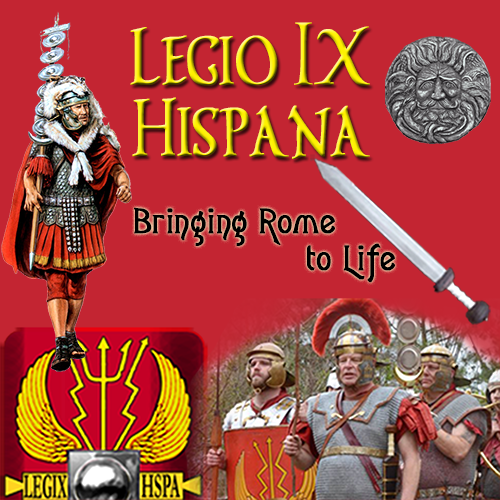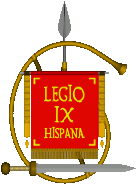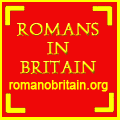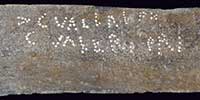Gladius et Balteus (sword and baldric)
The Roman sword. There are really only two main styles that we use, the "Pompeii" style (preferred) and the later-patterns of the "Mainz" type. The primary use of the gladius was for thrusting, but could be used for slashing. It was worn high on the right hand side by miles, on the left by centurions.
The Pompeii Style Gladius
The Pompeii, is a straight bladed short sword, It was double- edged weapon about 18" long and two inches wide with a corrugated bone grip, formed to the soldiers hand. A large round ball at the end helps with the balance. It's called the "Pompeii" because the first examples of this style were found among the ruins of the destroyed city of Pompeii.
The Romans used the gladius to deadly effect, teaching the soldiers to thrust, not cut. As found in
Vegitius:
They were likewise taught not to cut but to thrust with their swords. For the Romans not only made a
jest of those who fought with the edge of that weapon, but always found them an easy conquest. A stroke
with the edges, though made with ever so much force, seldom kills, as the vital parts of the body are
defended both by the bones and armor. On the contrary, a stab, though it penetrates but two inches, is
generally fatal. Besides in the attitude of striking, it is impossible to avoid exposing the right arm
and side; but on the other hand, the body is covered while a thrust is given, and the adversary receives
the point before he sees the sword. This was the method of fighting principally used by the Romans, and
their reason for exercising recruits with arms of such a weight at first was, that when they came to
carry the common ones so much lighter, the greater difference might enable them to act with greater
security and alacrity in time of action.
Flavius Vegetius Renatus. De Re Militari Book I: The Selection and Training of New Levies, 390
A.D
In buying a gladius, please look at some of these photos on this page for reference.

The Mainz Pattern GLadius
The Mainz pattern gladius is more of a "wasp-waisted" design, named after the area in Germany where many of these swords have been found. The Mainz, like the Pompeii, is a short, thrusting sword, but is longer and wider than the other.
The Mainz-pattern gladius predates the Pompeii pattern, but was not as common by the end of the 1st Cen. AD.
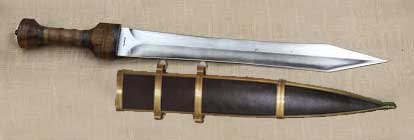
Swords to Buy
As with most Roman kit, you have several options. You can go with either a Mainz or Pompeii pattern — no Spathas.
Original Roman Swords and their Details:
The "Guttmann Pompeii"

Original Pompeii Gladius and scabbard parts from the former Guttman Collection
(click thumbnail to see larger photo)

